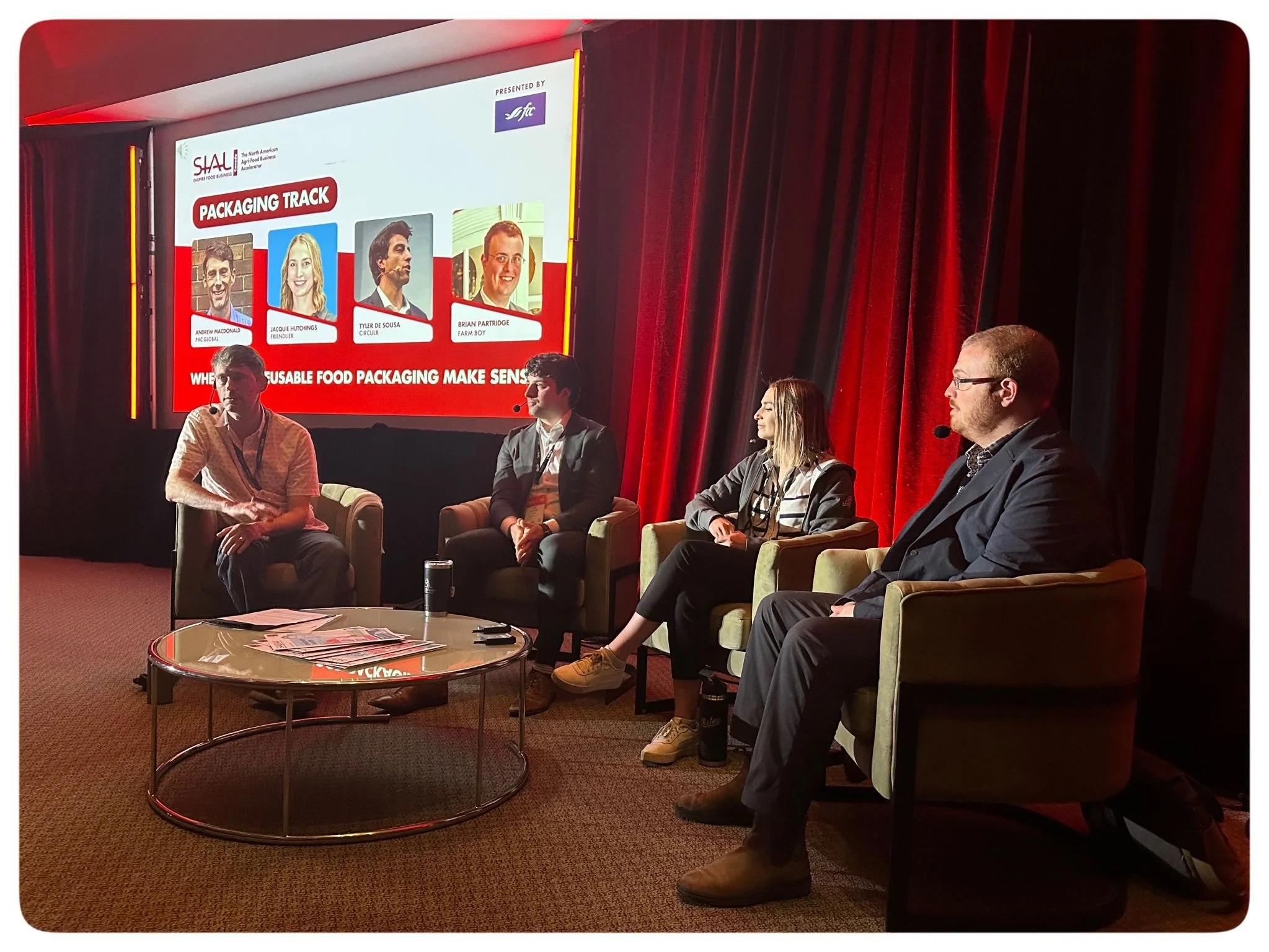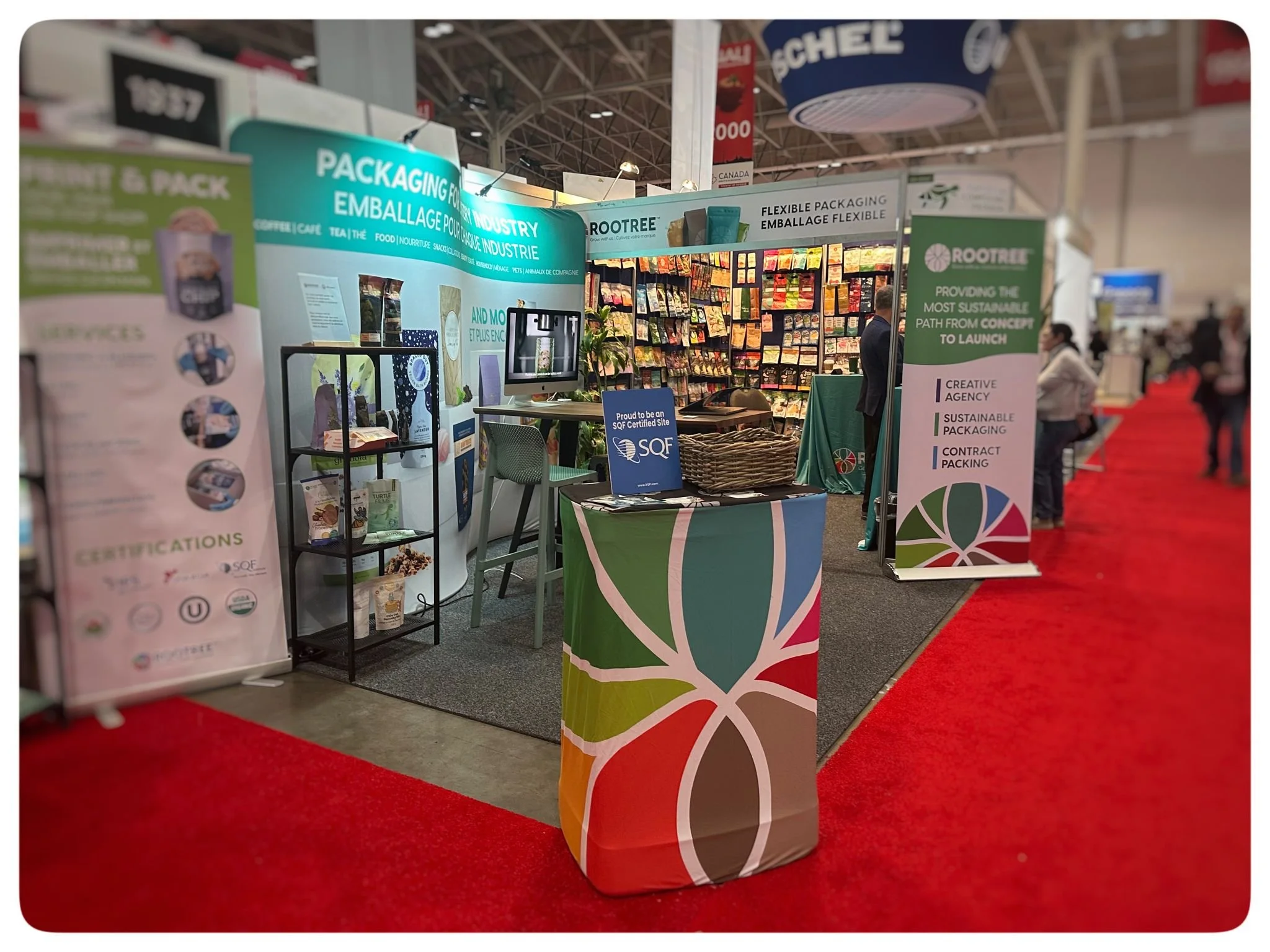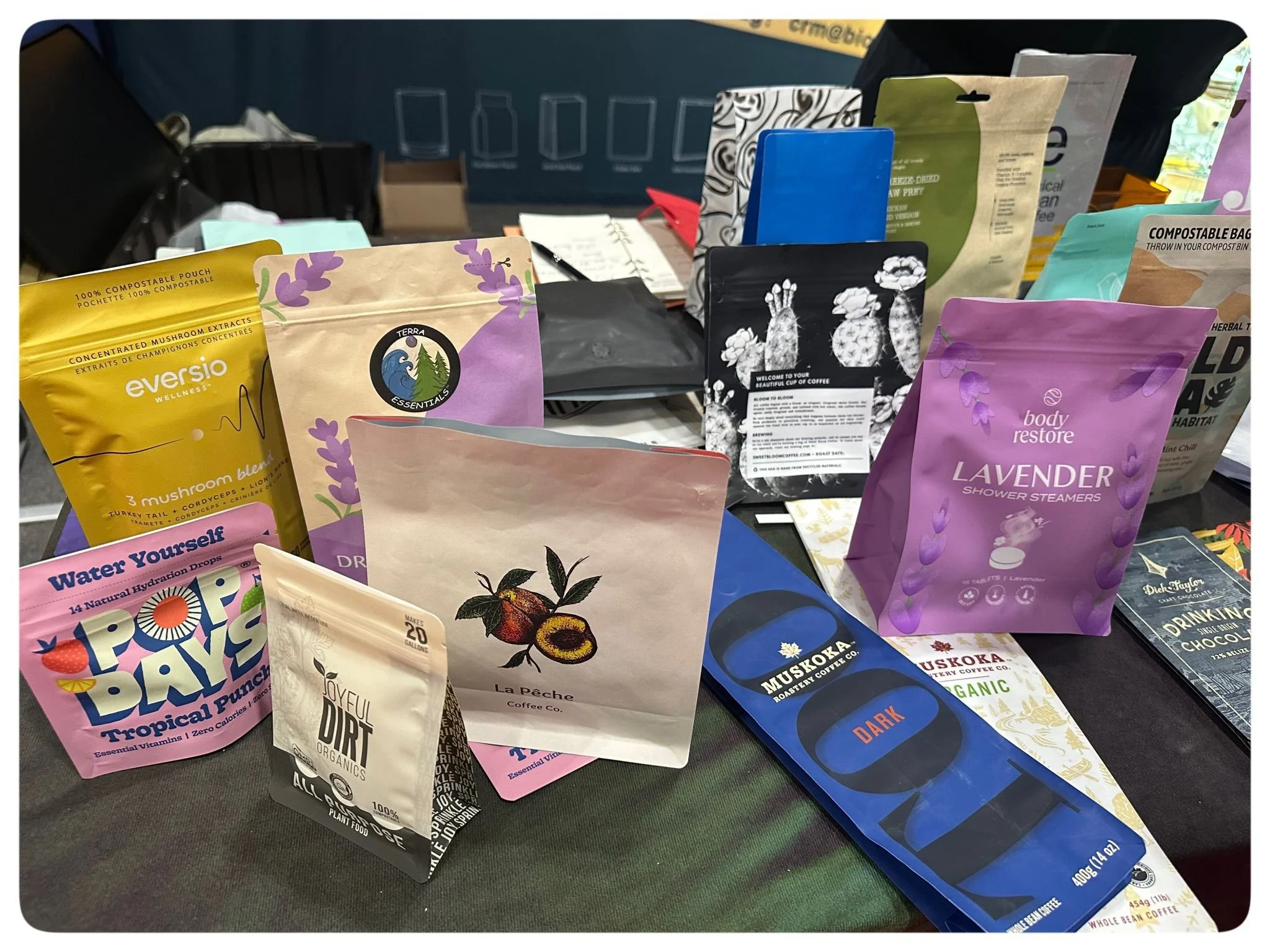More from Sial 2025!
Packaging at SIAL 2025
it’s clear the packaging world is moving forward—but companies approach sustainability with different maturity: Big brands tend to have the budget and team to push the goals faster. Smaller businesses? Not so much. Limited resources, time, and support are holding many of them back (as highlighted by GS1).
Ontario’s Blue Box program is expected to cost around $740 million in 2026 due to the Retail Council of Canada RCC, and it impacts everyone in the packaging value chain.
Here are 3 big directions we’re seeing take off:
🔁 Reusable packaging systems
From return-based loops like Friendlier and Circulr, to retail-driven models like Sobeys Loop system, reusables are gaining traction. Startups like Bopaq are also stepping up with services for the foodservice industry—think durable containers, reverse logistics, washing, and tracking.
♻️ Recyclable packaging by smart design
Simplicity is key. Using mono-materials makes recycling easier. TricorBraun is a great example, using mono-PE for stand-up pouches and also offering other solutions with up to 70% recycled content. JOMA Austria is rethinking plastics too—offering 100% rPET spice grinders and Securibox® containers that are food-safe and fully recyclable.
🌱 Eco-friendly, compostable, and bio-based materials
There’s real progress here—from cardboard food trays and paper folding boxes to cutlery and bowls made from sugarcane bagasse, bamboo fiber, wheat straw, and cornstarch-based PLA. Companies like Rootrees are offering compostable films, and startups like Oasismade are exploring fiber blends that offer both functionality and compostability.
Until now, no single approach fits all. And that’s a good thing. And yes, costs are rising. But so is innovation—and so is momentum. What we’re seeing at SIAL gives me hope. The drive to do better is real, and it’s happening at every level of the industry.







